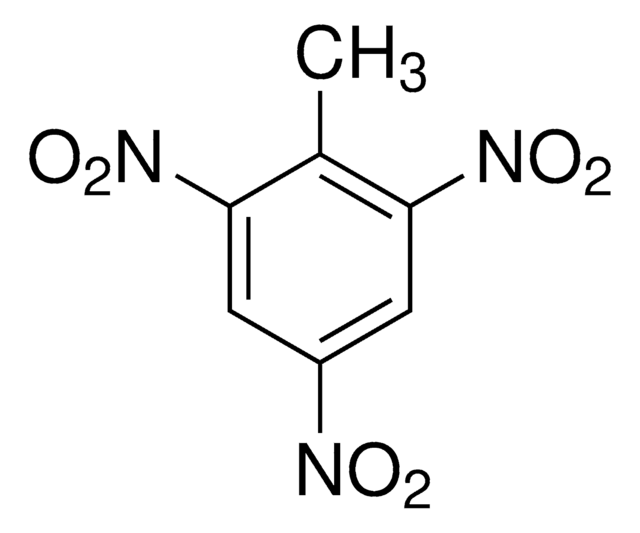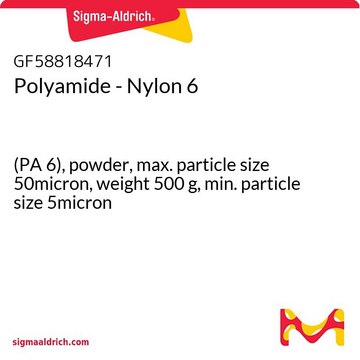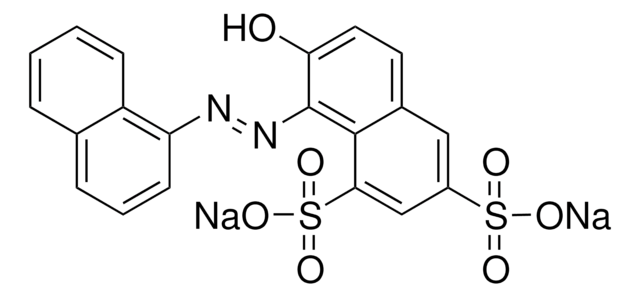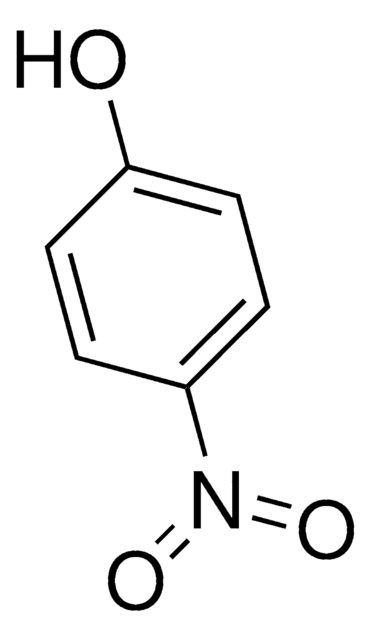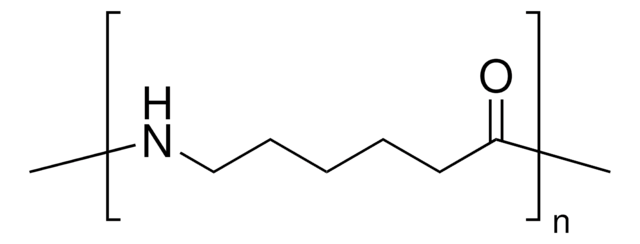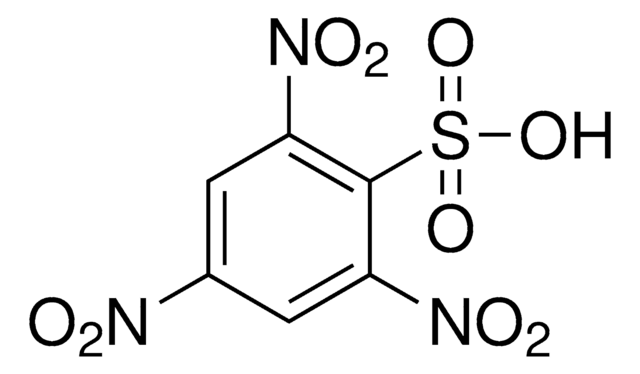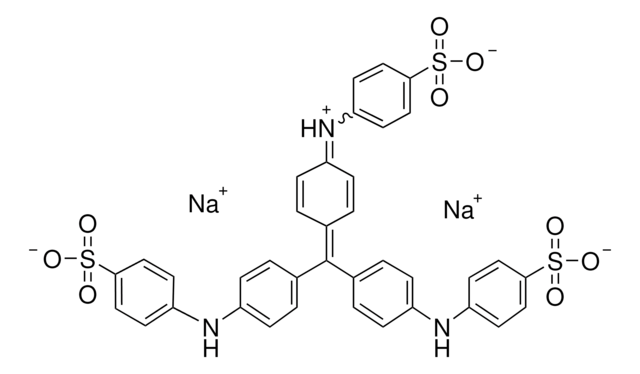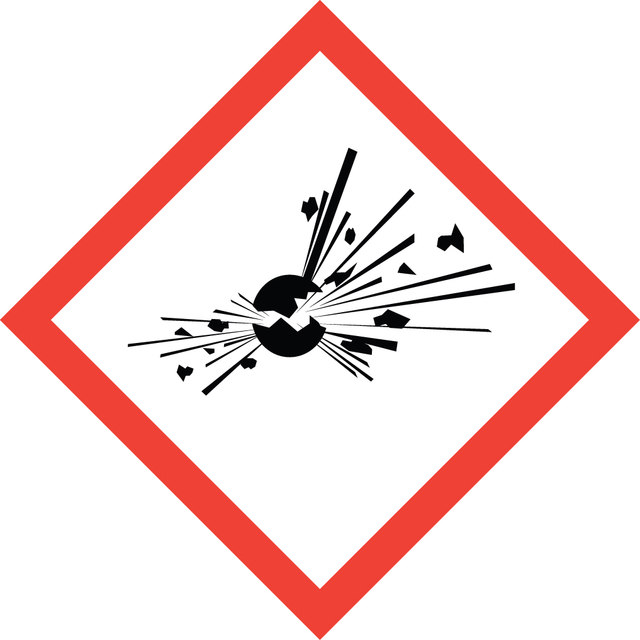442237
1,3,5-Trinitrobenzene
analytical standard, wetted material
Sign Into View Organizational & Contract Pricing
All Photos(1)
About This Item
Recommended Products
grade
analytical standard
packaging
ampule of 500 mg
technique(s)
HPLC: suitable
gas chromatography (GC): suitable
application(s)
environmental
format
neat
storage temp.
room temp
InChI
1S/C6H3N3O6/c10-7(11)4-1-5(8(12)13)3-6(2-4)9(14)15/h1-3H
InChI key
UATJOMSPNYCXIX-UHFFFAOYSA-N
Application
1,3,5-Trinitrobenzene may be used as a standard:
- For analyzing the toxic effects of TNT in sediments on two freshwater invertebrates, Chironomus tentans and Hyalella azteca.
- In the determination of 1,3,5-trinitrobenzene in environmental samples using high performance liquid chromatography coupled with atmospheric pressure ionization mass spectrometry (HPLC-API-MS).
Refer to the product′s Certificate of Analysis for more information on a suitable instrument technique. Contact Technical Service for further support.
Signal Word
Danger
Hazard Statements
Precautionary Statements
Hazard Classifications
Acute Tox. 1 Dermal - Acute Tox. 2 Inhalation - Acute Tox. 2 Oral - Aquatic Acute 1 - Aquatic Chronic 1 - Expl. 1.1 - STOT RE 2
Storage Class Code
1 - Explosive hazardous materials
WGK
WGK 3
Personal Protective Equipment
dust mask type N95 (US), Eyeshields, Gloves
Regulatory Information
监管及禁止进口产品
Choose from one of the most recent versions:
Already Own This Product?
Find documentation for the products that you have recently purchased in the Document Library.
Yiqun Chen et al.
Chemosphere, 236, 124365-124365 (2019-07-22)
Nitroaromatic compounds (NACs) are widely distributed in the environment and are considered toxic or carcinogenic. However, little attention has been paid to the binding interactions between NACs and biomacromolecules (e.g., proteins). Here we investigated the effects of three model NACs
Application of spectral libraries for high-performance liquid chromatography?atmospheric pressure ionisation mass spectrometry to the analysis of pesticide and explosive residues in environmental samples.
Schreiber A, et al.
Journal of Chromatography A, 869(1-2), 411-425 (2000)
Toxicity of the explosives 2, 4, 6?trinitrotoluene, hexahydro?1, 3, 5?trinitro?1, 3, 5?triazine, and octahydro?1, 3, 5, 7?tetranitro?1, 3, 5, 7?tetrazocine in sediments to Chironomus tentans and Hyalella azteca: Low?dose hormesis and high?dose mortality.
Steevens J A, et al.
Environmental Toxicology and Chemistry / Setac, 21(7), 1475-1482 (2002)
Jakub Nawała et al.
The Science of the total environment, 708, 135198-135198 (2019-12-10)
After World War II, conventional and chemical ammunition containing mainly secondary and primary explosives was dumped in the sea. Explosives have medium toxicity to aquatic organisms, earthworms and indigenous soil microorganisms. Therefore, environmental monitoring is required, especially for dumped munitions.
Michele Biagioli et al.
Nutrients, 12(7) (2020-07-08)
Dysbiosis is commonly detected in patients with inflammatory bowel disease (IBD), supporting the concept that a dysregulated immune reaction to bacterial antigens has a pathogenic role in the development of intestinal inflammation. In the present study, we have investigated the
Our team of scientists has experience in all areas of research including Life Science, Material Science, Chemical Synthesis, Chromatography, Analytical and many others.
Contact Technical Service
